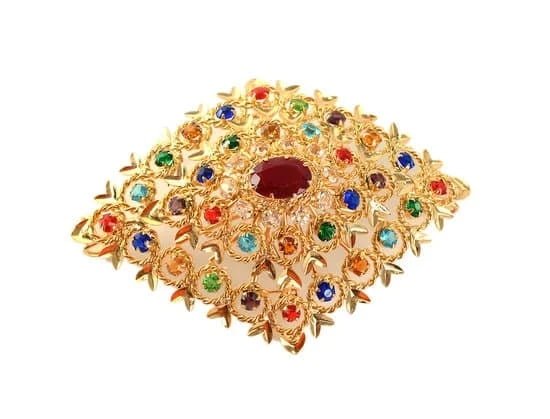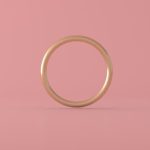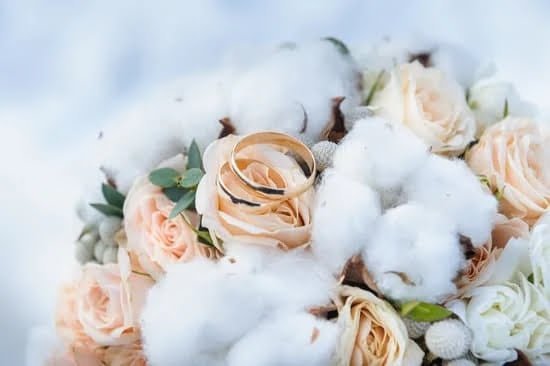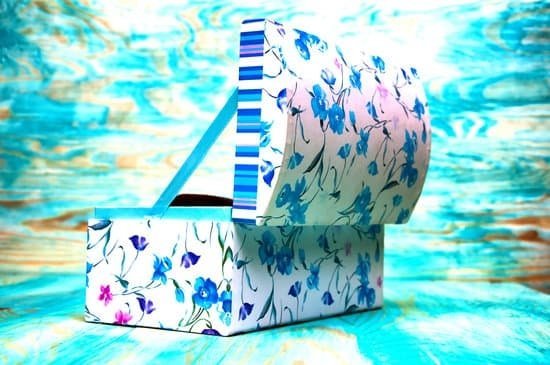Are you wondering how to shop for fine jewelry? Whether you’re looking for the perfect engagement ring, a stunning necklace, or a pair of elegant earrings, navigating the world of fine jewelry can be both exciting and overwhelming. In this article, we’ll explore the essential factors to consider when shopping for fine jewelry, from understanding the 4 C’s (cut, color, clarity, and carat weight) to setting a budget and finding the right style that reflects your personality.
When it comes to purchasing fine jewelry, it’s important to have a clear understanding of what sets high-quality pieces apart. The 4 C’s are crucial in determining the value and overall quality of a gemstone. We’ll delve into these aspects and provide valuable tips on what to look for when evaluating diamonds and other precious stones.
In addition to understanding the technical aspects of fine jewelry, we’ll also discuss the importance of setting a budget that aligns with your financial means while ensuring that you’re getting good value for your investment. Buying from reputable sources with certifications and guarantees is another crucial consideration that we’ll explore in this article. So let’s begin our journey into the world of fine jewelry selection.
Understanding the 4 C’s
When shopping for fine jewelry, it’s crucial to understand the 4 C’s: Cut, Color, Clarity, and Carat Weight. These factors play a significant role in determining the quality and value of the piece you’re considering. Here’s a breakdown of what each C means:
- Cut: The cut of a diamond or gemstone refers to its proportions, symmetry, and polish. It directly affects how the stone reflects light, ultimately determining its sparkle and brilliance. When shopping for fine jewelry, pay close attention to the cut of the stones to ensure maximum beauty.
- Color: The color grade of a diamond or gemstone can range from colorless to light yellow or brown. However, for colored gemstones like sapphires or emeralds, vibrant hues are prized. Understanding the color scale for both diamonds and colored gemstones will help you choose a piece that aligns with your preferences.
- Clarity: Clarity relates to the presence of inclusions or blemishes within a diamond or gemstone. The fewer imperfections present, the higher the clarity grade and overall value of the stone. Take into account clarity when selecting fine jewelry to ensure you’re getting a clear and flawless piece.
- Carat Weight: Carat weight refers to the measurement of a diamond or gemstone’s weight. It’s important to note that carat weight does not necessarily correlate with size; factors such as cut can affect how large or small a stone may appear.
Knowing how to shop for fine jewelry involves being well-versed in these 4 C’s. Whether you’re in search of an engagement ring, necklace, bracelet, or earrings, understanding these factors will empower you to make informed decisions and select pieces that truly resonate with you.
Setting a Budget
When shopping for fine jewelry, one of the most important steps is setting a budget that aligns with your financial situation and preferences. Determining the right price range for you involves considering various factors, such as the type of jewelry you are interested in, the quality of materials, and your personal style. It’s essential to strike a balance between finding exquisite pieces that fit within your budget and ensuring that you are getting good value for your money.
The first step in setting a budget for fine jewelry is to assess how much you can comfortably afford to spend. This involves taking a close look at your overall financial situation and determining what portion of your discretionary income can be allocated towards purchasing jewelry. Whether you are looking for an engagement ring, necklace, bracelet, or earrings, it’s crucial to have a clear understanding of what you are willing to spend before beginning your search.
Another important consideration when determining the right price range for fine jewelry is understanding the quality of materials and craftsmanship. For example, if you are shopping for a diamond ring, becoming familiar with the 4 C’s – cut, color, clarity, and carat weight – will help you make an informed decision about the level of quality you desire within your budget constraints.
Additionally, keep in mind that there are various options available in terms of precious metals (such as gold and platinum), gemstones (such as diamonds and sapphires), and design intricacy that can impact the cost of jewelry.
Consulting with a reputable jeweler who can provide expert guidance on how to shop for fine jewelry based on your specific budget is also highly recommended. A skilled jeweler can help you navigate through different options while keeping your financial parameters in mind. By working closely with an expert in the field, you can gain valuable insights into making meaningful purchases that bring lasting satisfaction.
| Factors to Consider | Importance |
|---|---|
| Financial Situation | Crucial |
| Quality of Materials and Craftsmanship | Significant |
| Expert Guidance from a Jeweler | Highly Recommended |
Buying From Reputable Sources
When it comes to shopping for fine jewelry, one of the most important considerations is ensuring that you are purchasing from a reputable source. This means looking for certifications and guarantees that can give you peace of mind about the quality and authenticity of the pieces you are buying. Here’s what you need to know about the importance of certifications and guarantees when shopping for fine jewelry.
Understanding Certifications and Their Significance
Certifications are issued by independent gemological laboratories and serve as a verification of the quality and characteristics of a particular piece of jewelry. For example, if you are purchasing a diamond ring, you will want to look for a certification from a respected laboratory such as the Gemological Institute of America (GIA) or the American Gem Society (AGS).
These certifications will provide detailed information about the diamond’s cut, color, clarity, and carat weight, allowing you to make an informed decision about your purchase.
The Importance of Guarantees
In addition to certifications, it’s also important to look for guarantees when buying fine jewelry. A guarantee from the seller can provide added assurance that the piece you are buying is as described and that you will be protected in case of any issues with the jewelry.
Look for guarantees that cover aspects such as authenticity, craftsmanship, and gemstone quality. A reputable jeweler should be willing to stand behind their products with strong guarantees that demonstrate their confidence in the quality of their merchandise.
Why It Matters
Shopping for fine jewelry is an investment, both financially and emotionally. By purchasing from sources that provide certifications and guarantees, you can have confidence in the value and integrity of your purchase. It’s essential to do your due diligence when shopping for fine jewelry to ensure that you are getting what you pay for. When in doubt, always ask questions about certifications and guarantees before making a purchase.
Knowing Your Own Style
When it comes to buying fine jewelry, one of the most important factors to consider is how the pieces you choose reflect your own personal style and personality. Whether you prefer classic elegance, modern minimalism, or bohemian chic, your jewelry should be an extension of who you are.
To determine the best pieces for you, start by assessing your wardrobe and overall aesthetic. If you tend to lean towards timeless and traditional fashion choices, then classic diamond studs or a simple tennis bracelet might be the perfect addition to your collection.
On the other hand, if you’re someone who loves to make a statement with bold fashion choices, then unique gemstone pieces or intricate designs might be more suited to your tastes. Take a look at the jewelry you currently own and identify common themes or patterns that can help guide your future purchases. This will ensure that the pieces you invest in not only complement your style but also seamlessly integrate into your existing collection.
Additionally, consider the metal colors that best suit you and your skin tone. For example, those with warm undertones may find that gold jewelry enhances their natural glow, while cooler skin tones may be better suited to platinum or white gold. Paying attention to these details will help ensure that the jewelry you choose not only reflects your personality but also enhances your natural beauty.
| Fashion Style | Recommended Jewelry |
|---|---|
| Timeless and Traditional | Diamond studs or simple tennis bracelet |
| Bold and Statement-making | Gemstone pieces or intricate designs |
| Metal Colors | Warm undertones – Gold jewelry; Cool undertones – Platinum or white gold |
Consider the Occasion
When shopping for fine jewelry, it’s essential to consider the occasion for which you are purchasing the piece. Different events may call for different types of jewelry, so it’s important to keep this in mind as you browse and make your selection. Here are some key factors to consider when buying jewelry for a specific event:
- Formal Events: For formal occasions such as weddings, galas, or black-tie events, classic and elegant pieces are often the best choice. Think about investing in timeless designs such as diamond stud earrings, a delicate tennis bracelet, or a simple yet sophisticated pendant necklace.
- Casual Events: When attending more casual events like brunches, daytime gatherings, or an evening out with friends, you can opt for more playful and trendy pieces. Consider fun gemstone earrings, layered necklaces, or stackable rings to add a pop of color and personality to your look.
- Work-Related Events: If you’re buying jewelry for work-related events or professional settings, it’s best to go for understated and refined pieces that complement your attire without being too flashy. Stick to minimalistic designs such as small hoop earrings, dainty bracelets, or a simple chain necklace.
Additionally,*special occasions* like anniversaries or birthdays may call for personalized pieces such as birthstone jewelry or custom-engraved items. By considering the event at hand and how you want your jewelry to enhance your overall look and vibe during that time, you can make a more informed decision when making your purchase.
It’s essential to remember that the occasion plays a significant role in determining the type of fine jewelry that would be most suitable. Taking into account the purpose of wearing the piece will guide you in selecting something that not only looks beautiful but also fits in seamlessly with the overall tone of the event.
Care and Maintenance
Proper care and maintenance are essential for keeping your fine jewelry looking its best. Whether you own a dazzling diamond ring, a lustrous pearl necklace, or a stunning sapphire bracelet, maintaining the beauty and quality of your jewelry is crucial for its longevity.
Regular Cleaning
One of the most important aspects of caring for your fine jewelry is regular cleaning. Dust, dirt, and oils from skin contact can dull the appearance of your jewelry over time. Using a mild detergent or jewelry cleaner specifically designed for the type of gemstone or metal in your piece, gently clean your jewelry with a soft brush to remove any grime.
Safe Storage
Properly storing your fine jewelry is another key component of maintenance. When not wearing your jewelry, store it in a fabric-lined case or a compartmentalized box to prevent scratches and tangling. It’s also important to keep different types of fine jewelry separate from each other to avoid damage.
Professional Maintenance
In addition to regular at-home care, periodic professional maintenance by a jeweler is recommended. A trained professional can inspect your jewelry for loose settings or damaged prongs, as well as provide deep cleaning and polishing services to restore its original brilliance.
By carefully following these tips for care and maintenance, you can ensure that your fine jewelry remains radiant and beautiful for years to come. Understanding how to shop for fine jewelry includes knowing how to properly maintain it once it becomes part of your collection.
The Value of Expert Advice
When it comes to purchasing fine jewelry, the value of expert advice cannot be overstated. Consulting a jeweler is an essential step in the shopping process as their knowledge and expertise can provide invaluable guidance in selecting the perfect piece. Whether you’re in the market for a stunning diamond engagement ring or a timeless pair of earrings, a professional jeweler can offer personalized recommendations based on your preferences and budget.
One of the key reasons why consulting a jeweler is essential is their ability to educate you on the 4 C’s of diamonds: cut, color, clarity, and carat weight. Understanding these factors is crucial in making an informed decision when purchasing a diamond piece. A reputable jeweler can walk you through the intricacies of diamond quality and help you choose a stone that meets your criteria and budget without compromising on beauty and brilliance.
In addition to educating you on diamond quality, a skilled jeweler can also assist you in determining the right price range for your purchase. Setting a budget for buying fine jewelry is important, and a jeweler can help you navigate through various options that align with your financial plan while ensuring that you get excellent value for your money.
With their expertise, they can present you with several choices within your budget without sacrificing quality or style. Overall, seeking expert advice from a jeweler is an essential step in ensuring that you make an investment in fine jewelry that brings joy and lasts a lifetime.
Conclusion
In conclusion, shopping for fine jewelry is not only about finding the most beautiful pieces, but also about making informed decisions that will bring joy and last a lifetime. By understanding the 4 C’s – Cut, Color, Clarity, and Carat Weight – you can ensure that you are investing in high-quality jewelry that will retain its value over time. Setting a budget is crucial to finding the right price range for you, allowing you to make a purchase with confidence.
It is also important to buy from reputable sources that provide certifications and guarantees, giving you peace of mind and assurance of the jewelry’s quality. Knowing your own style and considering the occasion are key aspects of selecting jewelry that reflects your personality and suits the event. Additionally, caring for your fine jewelry properly will help it maintain its beauty for years to come.
Lastly, seeking expert advice from a trusted jeweler is invaluable when shopping for fine jewelry. A knowledgeable professional can guide you through the process, offer insights into craftsmanship and design, and assist in making choices that resonate with your preferences. By following these guidelines on how to shop for fine jewelry, you can find pieces that hold sentimental value and bring delight every time they are worn or admired.
Frequently Asked Questions
What Should I Look for in Fine Jewelry?
When looking for fine jewelry, it’s important to consider the materials used, such as precious metals like gold or platinum and gemstones like diamonds or rubies. The craftsmanship and design should also be of high quality, with attention to detail and expert finishing.
Additionally, reputable brands or jewelers known for their fine jewelry collections are worth considering when making a purchase.
How Can You Tell if Jewelry Is Fine?
Fine jewelry is typically marked with a quality stamp indicating the purity of the metal used, such as 24K for pure gold or PT950 for platinum. Gemstones should be certified by reputable grading laboratories like GIA or AGS.
The overall weight of the piece can also be a clue, as fine jewelry tends to be substantial due to the quality materials used.
How Do You Get Good Quality Jewelry?
To ensure good quality jewelry, it’s important to buy from trusted and reputable sources such as established jewelers, renowned brands, or certified online retailers. Researching the seller’s reputation and customer reviews can provide insight into the quality of their products.
It’s also essential to ask about warranties, return policies, and certifications for both metals and gemstones before making a purchase.

Welcome to my jewelry blog! My name is Sarah and I am the owner of this blog.
I love making jewelry and sharing my creations with others.
So whether you’re someone who loves wearing jewelry yourself or simply enjoys learning about it, be sure to check out my blog for insightful posts on everything related to this exciting topic!





